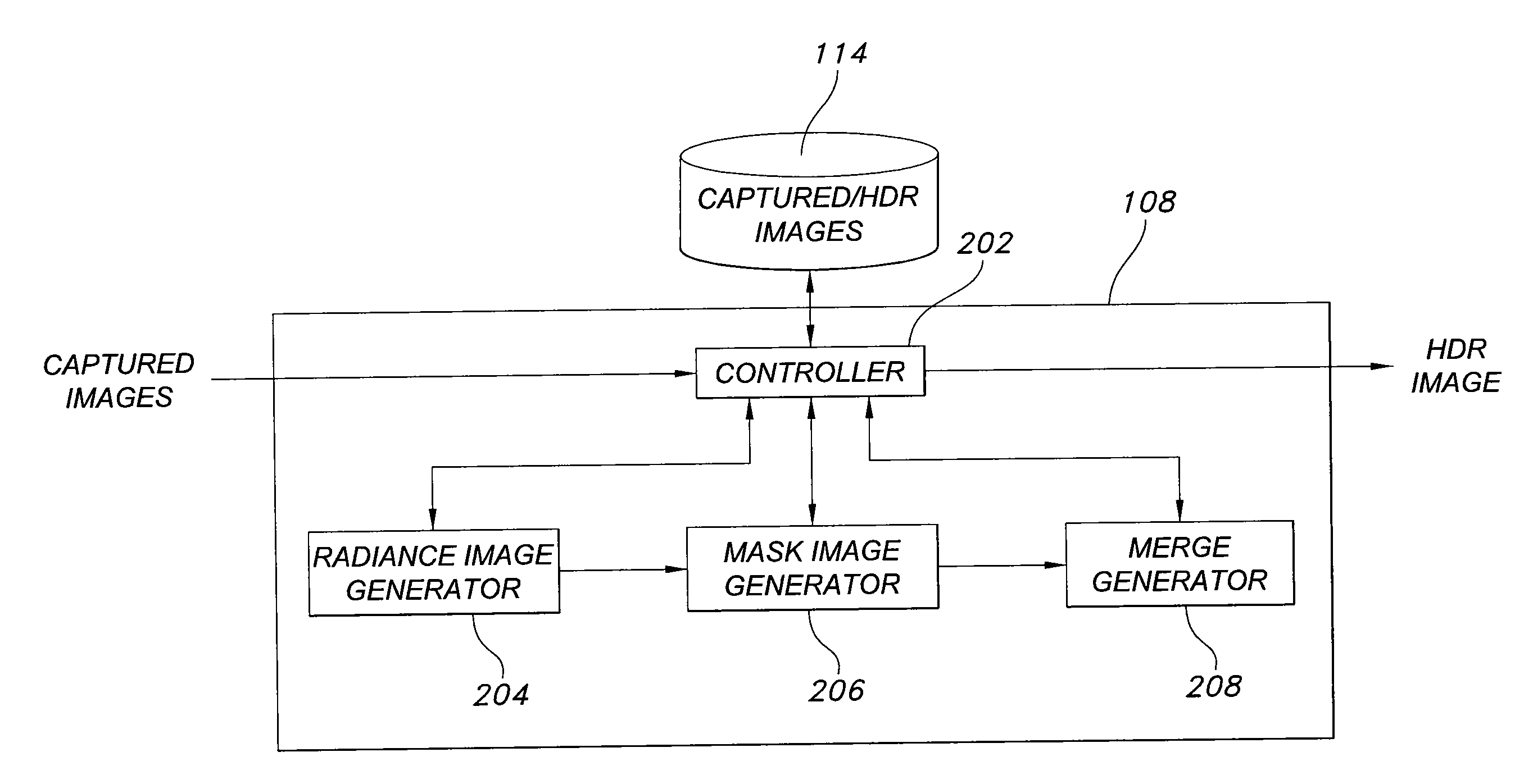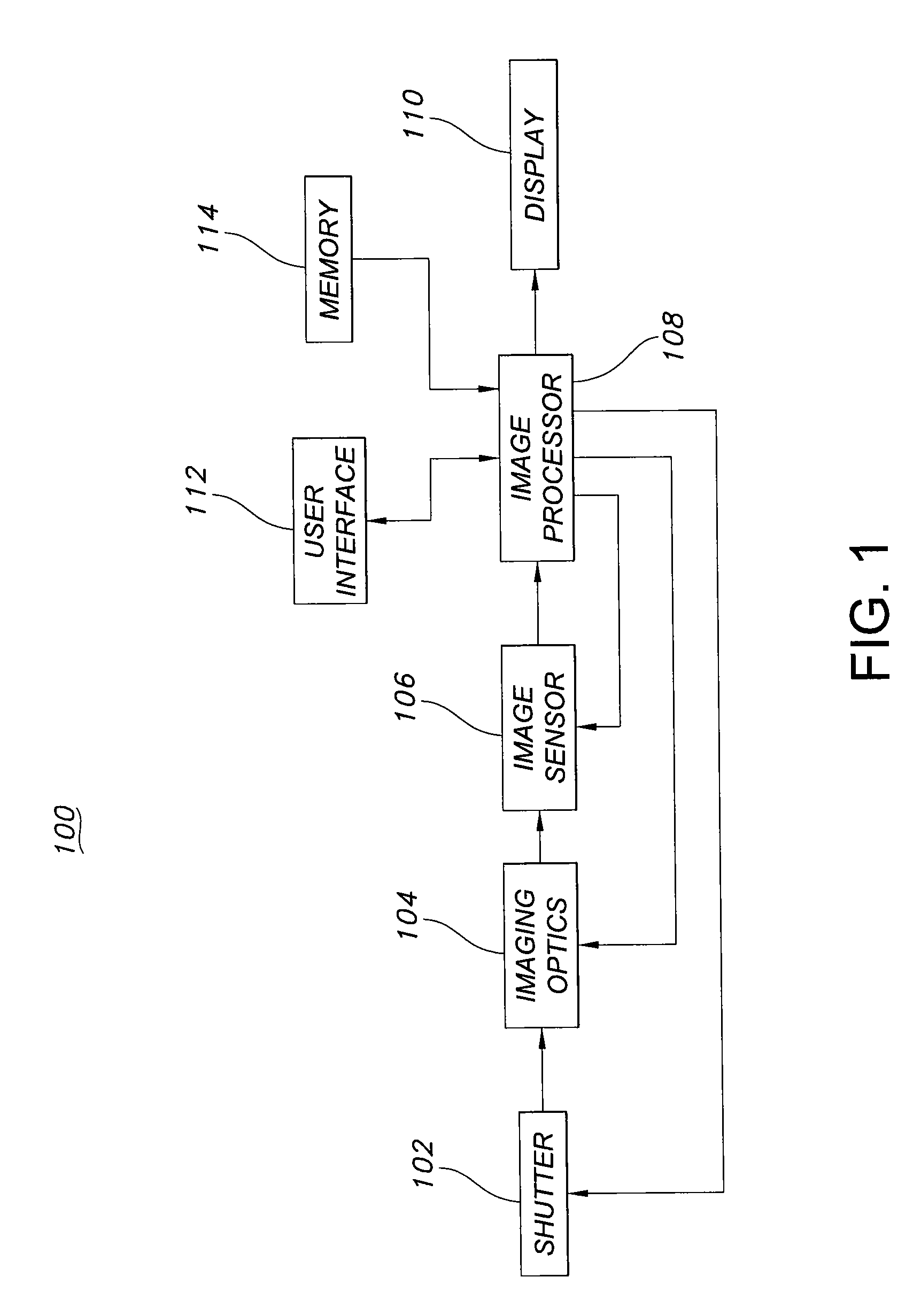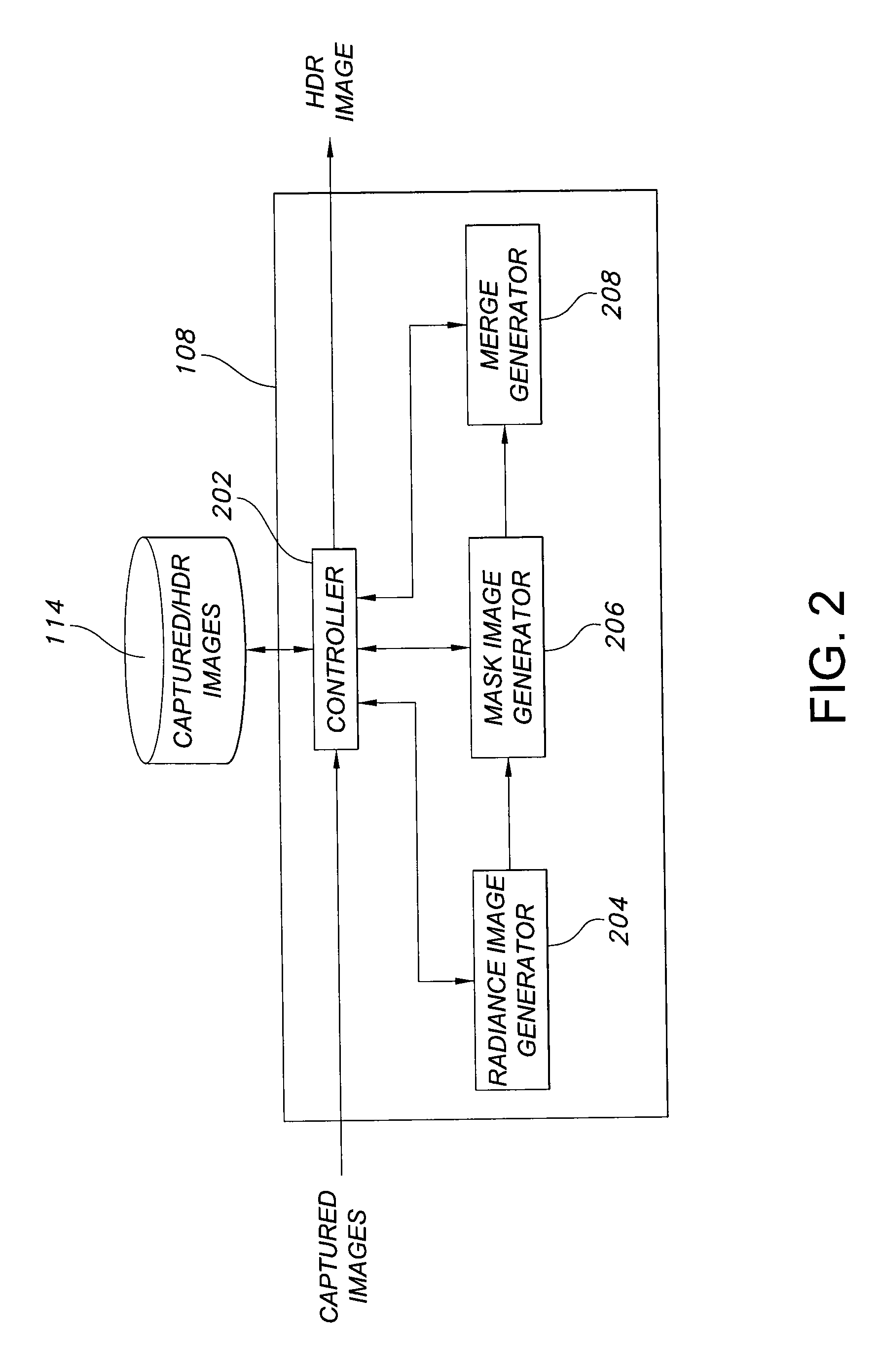Method of capturing high dynamic range images with objects in the scene
a high-dynamic range, object-based technology, applied in the field of methods, can solve the problems of reducing the quality of the captured image, affecting the quality of the combined image, and insufficient capture of dark features,
- Summary
- Abstract
- Description
- Claims
- Application Information
AI Technical Summary
Problems solved by technology
Method used
Image
Examples
Embodiment Construction
[0016]Aspects of the present invention relate to the capture of high dynamic range (HDR) images with objects, such as people, included in a scene. An HDR image that includes objects is generated by using a low dynamic range exposure of the object in the scene, as well as a high dynamic range exposure of the scene itself (i.e. without the object). Because an image of people generally tends to have a limited dynamic range, a single exposure at a suitable exposure setting may be used to cover the entire dynamic range for the people in the scene.
[0017]FIG. 1 is a block diagram of an imaging device, designated generally as 100, used to capture digital images and generate HDR images. Imaging device 100 includes shutter 102, imaging optics 104, image sensor 106, image processor 108, display 110, user interface 112 and memory 114. In one embodiment, imaging device 100 is a hand-held digital camera used to capture still digital images. In another embodiment, imaging device 100 is a digital v...
PUM
 Login to View More
Login to View More Abstract
Description
Claims
Application Information
 Login to View More
Login to View More - R&D
- Intellectual Property
- Life Sciences
- Materials
- Tech Scout
- Unparalleled Data Quality
- Higher Quality Content
- 60% Fewer Hallucinations
Browse by: Latest US Patents, China's latest patents, Technical Efficacy Thesaurus, Application Domain, Technology Topic, Popular Technical Reports.
© 2025 PatSnap. All rights reserved.Legal|Privacy policy|Modern Slavery Act Transparency Statement|Sitemap|About US| Contact US: help@patsnap.com



